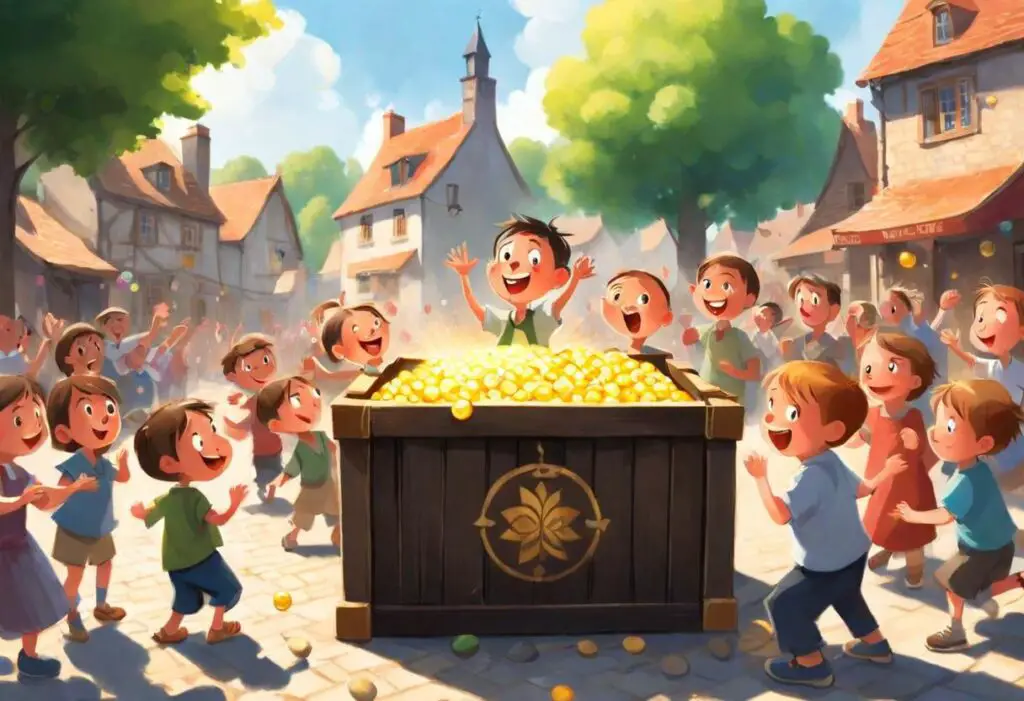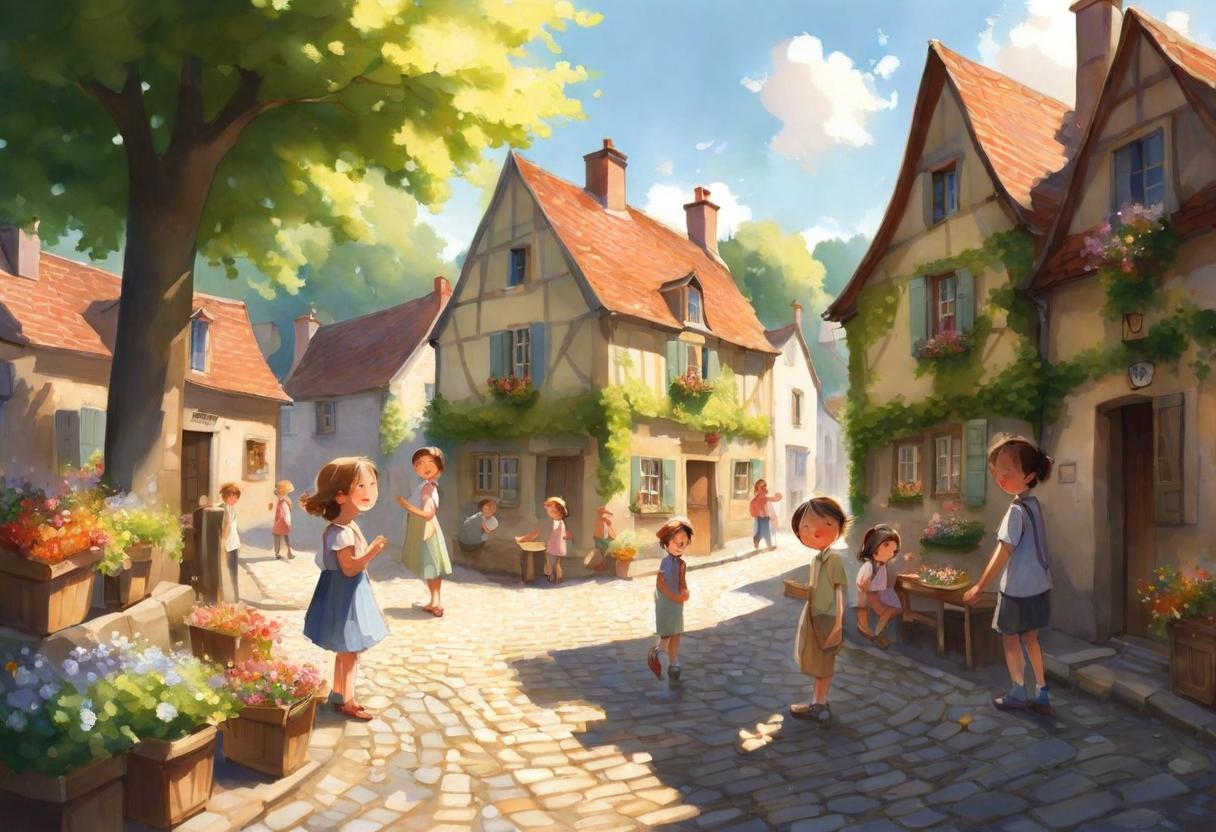Introduction to The Lottery By Shirley Jackson:
“The Lottery” is a short story written by Shirley Jackson. It was first published in The New Yorker magazine in 1948. The story takes place in a small village where the people gather for an annual event called “The Lottery.” At first, it seems like a normal and happy tradition. However, as the story progresses, the reader learns that this lottery has a dark and shocking outcome. The Lottery By Shirley Jackson
Historical Context:
Shirley Jackson wrote “The Lottery” in 1948, a time when America was recovering from World War II. During this period, people returned to traditional values and embraced a sense of conformity. However, the story reflects the tension between societal expectations and individual morality. By setting the story in a seemingly idyllic village, Jackson critiques the blind acceptance of harmful practices, which is a reflection of the era’s often unquestioned conformity.
Major Characters of Story:
Tessie Hutchinson: Tessie is the main character who ends up being chosen for the lottery. At first, she jokes about being late but becomes desperate when she is selected. Her character shows how people can change quickly when they are in danger.
Mr. Summers: He conducts the lottery and represents authority in the village. He seems kind but follows the lottery’s cruel tradition without question. His character shows how people in power can enforce harmful practices.
Old Man Warner: He is the oldest man in the village and strongly believes in keeping the lottery. He represents blind adherence to tradition. His character highlights how some people resist change and hold onto outdated beliefs.
The Villagers: The other villagers, including children, participate in the lottery. They show how society as a whole can accept and perpetuate violence. Their actions reveal how people can become numb to cruelty.
Plot Summary of The Lottery By Shirley Jackson:
In a small village, the people come together for the annual lottery on June 27th. This event is something everyone participates in, and it starts early in the morning. The sun shines brightly, and there’s a sense of excitement in the air. Children, full of energy, run around and gather stones while the adults chat and joke with one another. The atmosphere is almost festive, and everyone seems to be in a good mood.
As the morning progresses, Mr. Summers, who runs the lottery, arrives. He carries with him a black box filled with slips of paper. This black box is old and worn out, a symbol of the tradition that has been followed for many years. Mr. Summers places the box on a stool in the center of the square, and the villagers begin to gather around it. The lottery is about to begin, and there’s a mix of anticipation and nervousness in the air.

First, Mr. Summers calls out the names of the heads of each family. One by one, they come forward to draw a slip of paper from the box. Each person reaches in, takes a slip, and holds it tightly in hand, not looking at it yet. The tension builds as everyone waits to see who will get the marked slip. After all the slips have been drawn, Mr. Summers instructs everyone to open their papers at the same time.
When the slips are opened, a hush falls over the crowd. The Hutchinson family has drawn the marked slip. There’s a murmur of surprise, and people turn to look at the family. Bill Hutchinson, the father, holds up the slip to show that his family has been chosen. At this moment, the atmosphere changes. What was once a cheerful gathering becomes tensed.
Part II:
Next, each member of the Hutchinson family must draw again to determine who among them will be the final recipient of the marked slip. Mr. Summers puts five slips back into the box, one for each member of the family. He makes sure one of them is marked, and then he mixes the slips. Bill, Tessie, and their three children step forward, one by one, to draw a slip from the box. The crowd watches in silence, the suspense almost unbearable.
When all the slips have been drawn, Mr. Summers instructs the Hutchinson family to open their papers. As they do, the crowd leans in to see Tessie Hutchinson holding the marked slip. She cries out in protest, saying it isn’t fair and that they didn’t give her enough time. Her words fall on deaf ears, as the villagers, including her friends, begin to move towards her with stones in their hands.
The horror of the lottery’s true purpose is revealed in this moment. The stones that the children had gathered so innocently earlier in the day are now weapons. The villagers, who were just moments ago laughing and chatting, turn into a mob. They surround Tessie, and despite her desperate pleas, they begin to stone her. Her screams fill the air, but no one stops. The story ends with Tessie’s cries fading away, a reminder of the violence that can lie hidden beneath the surface of even the most ordinary of traditions.
In conclusion, the annual lottery in this small village is not a celebration, but a ritual of senseless violence. It serves as a powerful commentary on the dangers of blindly following traditions without questioning their morality. Shirley Jackson’s story forces us to confront the darkness that can exist within communities and within ourselves.
Themes of The Lottery By Shirley Jackson:
Tradition and Ritual: The villagers follow the lottery every year without knowing why. This shows how societies can continue harmful practices out of habit. For example, they use the old black box despite its poor condition, showing they resist change and prefer what they know.
The Randomness of Violence: The lottery’s randomness shows how violence can happen to anyone without reason. Tessie Hutchinson is chosen randomly, showing how violence can strike suddenly and without meaning.
Conformity and Societal Pressure: The villagers join the lottery even if they don’t want to. This shows how society’s expectations can make people do things they don’t agree with. Consequently, Old Man Warner’s defending the lottery illustrates how conformity can stop people from thinking for themselves.
The Role of Scapegoating: Tessie Hutchinson becomes the community’s scapegoat for the lottery. This shows how people blame others instead of facing their own problems. The story warns about the harm of blaming others to keep society in order.
Character Analysis in The Lottery By Shirley Jackson:
Tessie Hutchinson: At first, Tessie seems like a regular villager in the story. But as she changes from joking to desperate when chosen, she shows how ordinary people can suffer in society’s violence.
Mr. Summers: He runs the lottery with a happy attitude that contrasts with its harshness. Mr. Summers is like authority figures who keep harmful traditions without questioning if they’re right.
Old Man Warner: The oldest villager, he strongly supports the lottery. This shows fear of change and sticking to old ways, even if they’re harmful.
The Villagers: Together, they show how society can accept cruelty. Everyone, even kids, joins in the stoning, accepting violence as normal
Symbolism and Literary Devices:
The Black Box: The old black box symbolizes tradition and resistance to change. It’s falling apart, showing the tradition is old and may be harmful. The villagers won’t replace it, showing they stick to the past, even if it’s bad.
The Stones: Kids collect innocent stones, but they turn into weapons in the story. This shows how innocence can change under society’s rules. The stones also show how the village can be cruel together.
Irony: The story’s sunny start contrasts with its bad end, making it uneasy. This shows how looks can hide real problems when you follow tradition without thinking.
Foreshadowing: Kids collecting stones at the start shows how the story will get violent later. This builds worry and shows how small things can lead to big problems
Critical Reception and Legacy:
“When ‘The Lottery’ came out, it caused a lot of arguments and angry letters. “Readers were surprised by its violent ending and its critique of society’s rules. But now, it’s considered a classic story. Scholars and readers study its themes and literary techniques.” It’s one of the most important short stories in American books, often in collections and taught in schools.
Adaptations:
“The story ‘The Lottery’ has been turned into movies, like a short film in 1969 and a TV movie in 1996. It’s also been performed on stage many times. These versions show how the story is still important today. They each show it in a new way, but they all share a strong message about people and society. This shows how Jackson’s story stays important over time.”
Moral and Ethical Implications:
“The Lottery” raises profound moral and ethical questions about the nature of tradition, the capacity for violence in ordinary people, and the consequences of conformity. In doing so, it challenges readers to examine their own societal practices and the potential harm they may cause. Consequently, the story serves as a powerful reminder to critically evaluate the traditions and norms we follow and to consider the ethical implications of our actions.
In conclusion, “The Lottery” by Shirley Jackson is a powerful story that reveals the dark side of human nature and societal traditions. Through its simple setting and shocking ending, the story encourages readers to question the traditions and practices they follow. It remains an important and thought-provoking piece of literature. The story’s themes of tradition, violence, and conformity are still relevant today, making it a timeless work.
Frequently Asked Questions (FAQs):
Q: Why do the villagers hold the lottery?
A: The villagers hold the lottery because it is a long-standing tradition. They believe it brings good luck and ensures a good harvest. This belief shows how people can follow harmful practices without questioning them.
Q: What is the significance of the black box?
A: The black box symbolizes tradition. It is old and falling apart, but the villagers refuse to replace it, showing their attachment to the past. The box represents how people hold onto traditions even when they are no longer practical.
Q: What is the main message of “The Lottery”?
A: The main message is to question blind adherence to tradition and to recognize the potential for violence and cruelty in society. The story encourages readers to think critically about their own beliefs and the practices they follow.
References and Further Reading:
Jackson, Shirley. “The Lottery.” The New Yorker, 1948.
“The Lottery” by Shirley Jackson: Summary and Analysis. Click here
Exploring Themes in “The Lottery” by Shirley Jackson. Click here
